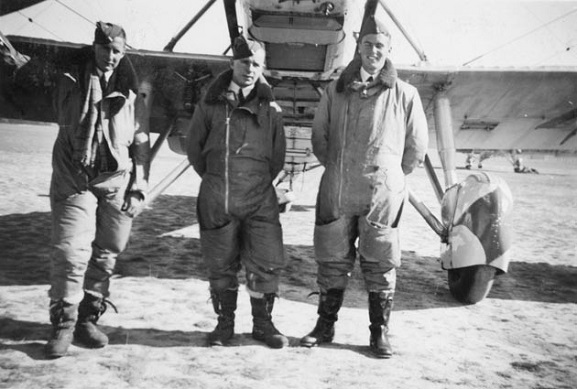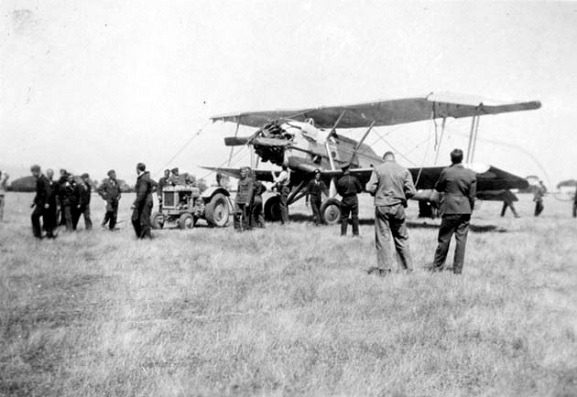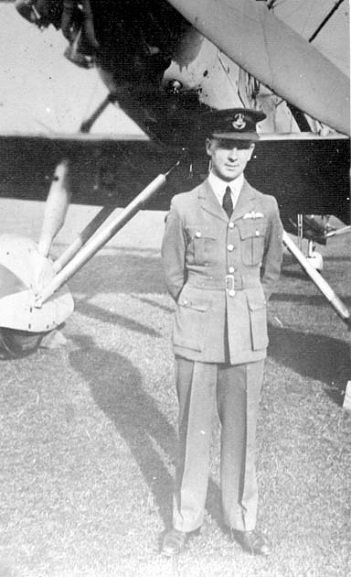
In order to create the best possible results, the Vildebeest restoration project draws expertise from across the Museum in the form of a Project Team. This includes technical personnel, research and archives, curatorial and communications staff. As well as the practical lack of technical drawings and information, uncovering what NZ102 did during its long service with the RNZAF is also problematic. A lack of surviving unit and operational records, as well as technical and servicing information makes life difficult in terms of operational and flying history. Many records were destroyed after World War Two, as they were considered of little historical value, once the Official History of the RNZAF had been written.
Our researchers have had to get creative. An obvious rich source of possible information is the flying log books of both pupils and instructors who flew NZ102. We have identified a number of these, checking any which have Vildebeest flying in New Zealand. So far 14 individuals have been identified and all the flights, units and locations recorded in detail on a spreadsheet. It is very slow and painstaking research but in the course of this, some surprising links have been found and the first stories and associations with those who served before uncovered. It also allows us to see how NZ102 was used and where it went during its flying career.

The first flights we have recorded were by Maurice Buckley in June 1935, not long after the first 12 Vildebeests arrived at Hobsonville. There were then flights by notables of the New Zealand Permanent Air Force (NZPAF), such as Leonard Isitt, ‘Nugget’ Cohen and Edward Waters, with many gaps interspersed between the years 1936-1938.
On 2 May 1938, a young pilot learning to fly at Wigram took the controls of NZ102 for the first time. His name was Leonard Trent. Trent flew in NZ102 as pilot or passenger 13 times. Most notable was the visit to Rongotai in Wellington and participation in a fly-past of Vildebeests during the RNZAF’s first major air show on 4 June 1938. Trent would go on to be commissioned in the Royal Air Force (RAF), like most pilot trainees in this period, and serve with distinction. He was awarded the Victoria Cross in 1945, one of only three members of the RNZAF to be so honoured in history.

As a largely training aircraft prior to World war Two, most of the Vildebeests had unremarkable flying careers, though occasionally the odd mishap occurred. No 7 Pilot’s Course ran at Wigram just before the outbreak of war in 1939. Two of the pilots on this course became associated with NZ102 and have left us documentary and visual evidence. While logbooks are a great source of information, sometimes more is needed. We learned early on in our research that NZ102 had only one major recorded mishap in its life, in 1939. Curiously, there was no mention of the incident in the manuscript unit history of Wigram. We were able to get our NZDF colleague, Matthew Buck in Wellington to copy the original file held at Archives New Zealand. The contents were revealing.
On 23 February 1939, a young trainee pilot named David ‘Sealy’ Clark was ordered to fly solo in NZ102 and climbed to 15,000 feet for 30 minutes. On descending, he forgot to pump the brakes and noticed the brake pressure gauge was a little off. A perfect landing was soon compromised by the failure of the wheels to rotate, sending NZ102 into a slow and undignified somersault onto its back. Clark was uninjured.

We discovered that Clark’s diaries and logbooks are held by the National Library of New Zealand in Wellington. Once again, via our colleague at NZDF HQ, we were able to access these vital records. Clark described coming into land in his diary:
“I flattened out and was just do a very nice three pointer and as soon as the wheels touched, they stuck by the feel of things and I sort of skated along with my tail getting higher and higher. At the end she went over on her nose and then right on her back. I was left hanging upside down in the harness with my head about two feet from the ground.”
After being checked over by the Medical Officer, Clark was urged to ‘get back on the horse’ and took up another Vildebeest that afternoon. On landing, he ground-looped this machine without damage. The day’s two incidents earned him the dubious nickname of ‘Somersaulting Sealy’ around the station (Sealy being one of his middle names).

A full investigation revealed no issues with the brakes and both the Station Commander and Chief of Air Staff Air Vice-Marshal Sir Ralph Cochrane felt a Court of Enquiry was not needed, citing Clark’s novice status as the main cause. This attitude and the imminent visit of Cochrane probably explains why the unit history omitted the incident.
On the same course as Clark was William Foster, a 19-year-old from Christchurch. According to Foster’s log book, he flew NZ102 six times during training at Wigram, up to the date it was crashed by Clark. He also took photographs of the aftermath of Clark’s crash, which we could cross reference against the descriptions in the report. The accident report stated there was damage to the tail, mainplanes and engine but the fuselage was largely undamaged. NZ102 was posted to the Aeroplane Repair Squadron at Wigram and fully repaired for service by the time Foster flew it again, for the last time in September 1939.

Both Clark and Foster (like Trent) went on to commissions in the RAF. Their fates worked out very differently. Clark served with Bomber Command, reaching the rank of Wing Commander, was awarded the Distinguished Flying Cross twice and was Mentioned in Dispatches. He died in 2013, aged 97. William Foster was also destined for bombers, but never completed his training. On 8 June 1941, the Wellington he was piloting was lost on a night navigation exercise flight over the North Sea. His body was never found.
As we continue our research, more relationships between air crew and NZ102 will be revealed and these are just some of the results of the research done to date. Along the way, we are also recording and preserving information, so it can be of use to researchers in the future. The stories and events we uncover will, it is hoped, help interpret and share the life story of this rare survivor.
Did your ancestor fly or work on NZ102?
Do you have a log book or photographs referencing this aircraft? If so, we would love to hear from you! Please contact our team at: research@airforcemuseum.co.nz



